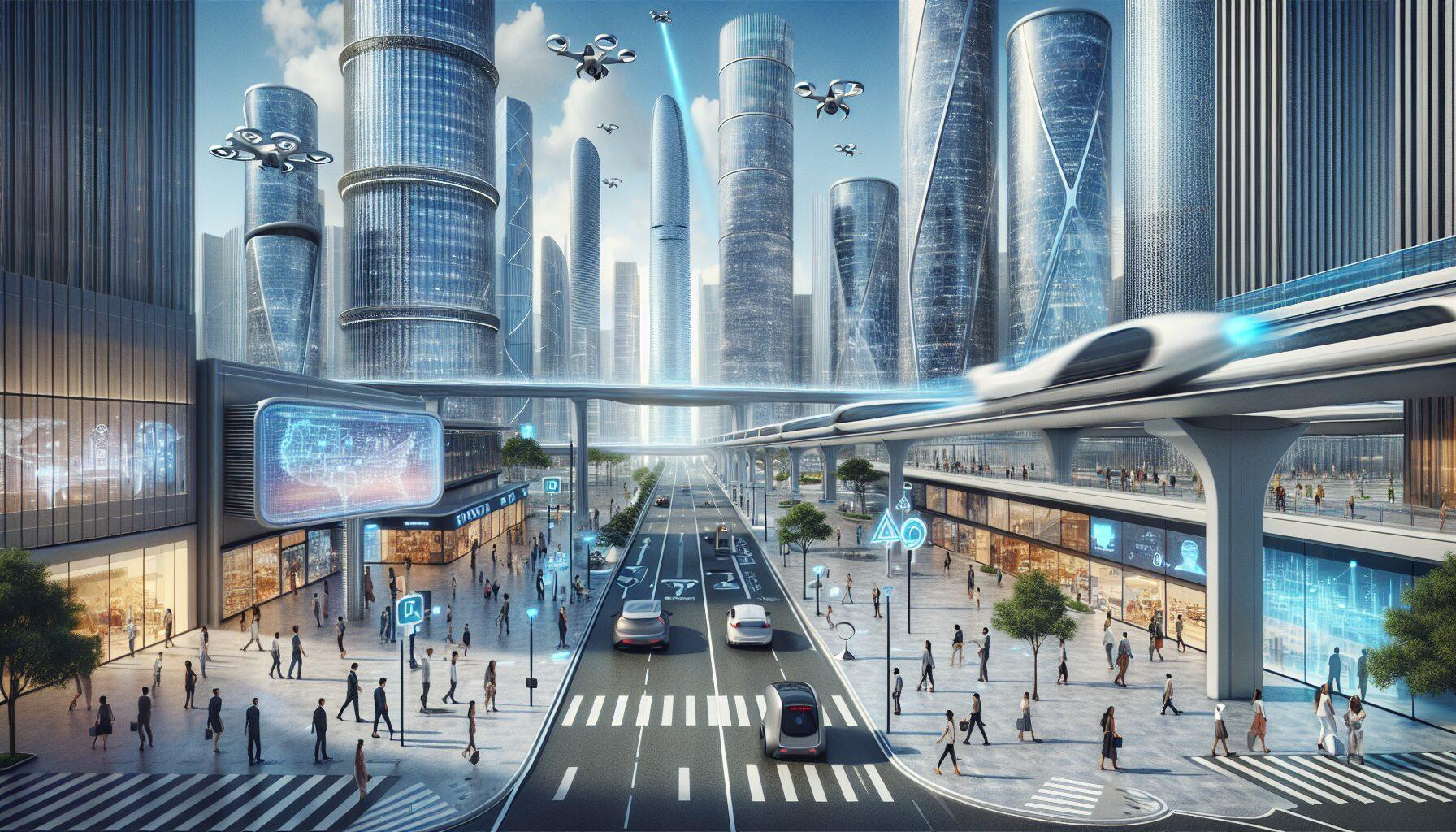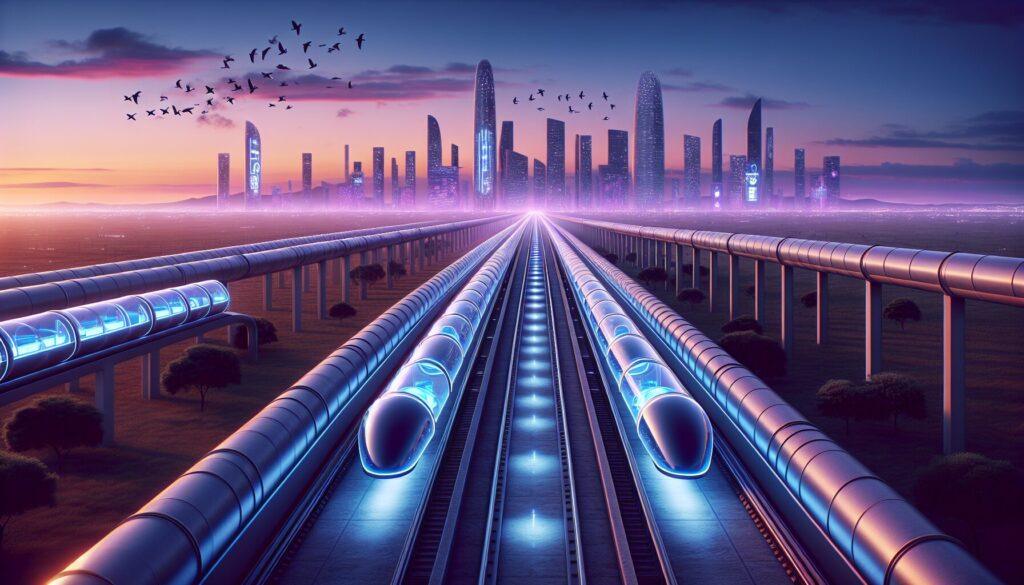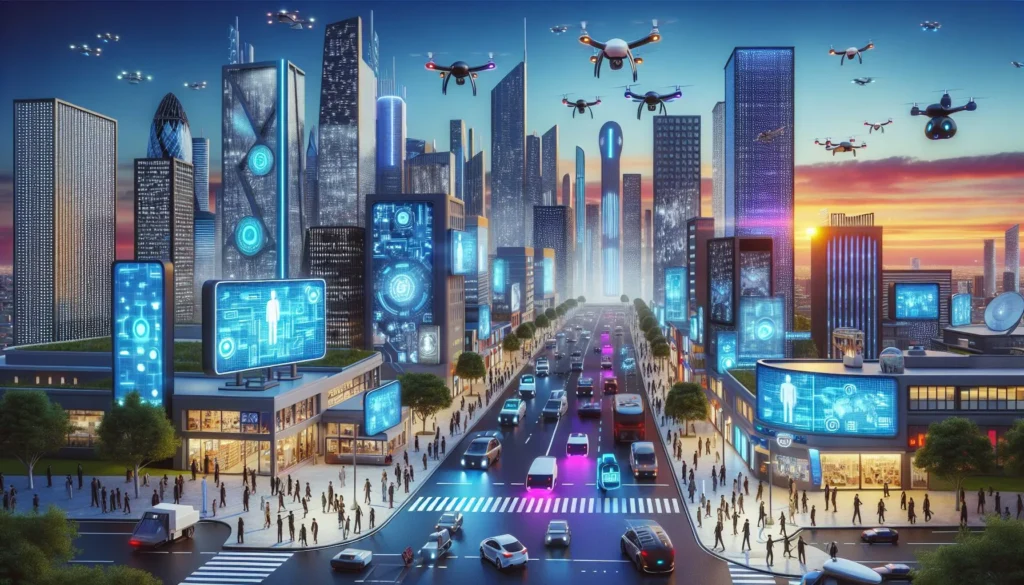Urban AI
As urban environments continue to grow and evolve, the role of AI personalization becomes increasingly vital. By leveraging data from a variety of sources – including traffic patterns, public transportation usage, and even social media trends – AI systems can tailor the urban experience to meet the unique needs of each resident.
This level of customization not only enhances the quality of life for city dwellers by making daily routines more efficient but also fosters a deeper connection between individuals and their urban surroundings, turning smart cities into intuitive living spaces that anticipate and adapt to the human element at their core.
Hey there, curious friend! Have you ever wondered how artificial intelligence (AI) is changing our cities? Urban AI is like the secret sauce turning our everyday urban environments into smart, efficient, and more livable spaces. Let’s take a stroll through this fascinating world and explore how AI is reshaping city life.
What is Urban AI?

Urban AI refers to the integration of artificial intelligence technologies within the urban ecosystem, encompassing everything from traffic management to public safety and environmental monitoring.
By analyzing vast amounts of data collected from sensors, cameras, and other IoT devices scattered throughout the city, AI algorithms can identify patterns, predict outcomes, and automate responses to enhance the quality of urban life.
This intelligent infrastructure is the backbone of a smart city, enabling seamless interactions between people, places, and services, and ensuring that the city not only runs efficiently but also adapts and evolves with the needs of its inhabitants.
Urban AI refers to the use of artificial intelligence to enhance city living, from traffic management to energy efficiency. It’s all about using technology to solve urban problems, making cities smarter and more sustainable.
Did You Know?
🔍 As cities continue to grow, the challenges they face become increasingly complex. Enter Urban AI, a game-changer in how we approach these issues. By leveraging big data, machine learning, and real-time analytics, Urban AI can optimize public transportation routes, reduce energy consumption in buildings, and even predict and manage emergency situations.
This not only improves the quality of life for city dwellers but also paves the way for a more responsive and adaptable urban environment.
With every byte of data, Urban AI is reshaping the metropolitan landscape into a more efficient and livable space for all. Cities like Singapore and Barcelona are pioneers in urban AI. They’ve implemented smart traffic systems that reduce congestion and pollution, making daily commutes a breeze!
How Urban AI Works
Urban AI leverages a wealth of data collected from a myriad of sources, including traffic cameras, sensors, and even citizens’ mobile devices, to inform and adapt its algorithms.
This constant stream of real-time information allows urban AI systems to predict traffic patterns, optimize public transportation routes, and even manage energy distribution across the city grid.
By harnessing the power of machine learning, these smart cities can continuously improve their processes, ensuring that urban life becomes more sustainable and responsive to the needs of its inhabitants.
Imagine waking up to a city that anticipates your needs. AI systems collect data from various sources like sensors, cameras, and even social media to understand and predict urban challenges. This data helps city planners and administrators make informed decisions, improving infrastructure and services.
A Day in a Smart City
1: Morning Commute: As you step out for your morning commute, AI-driven personalization begins to shape your day. Traffic lights are optimized in real time, reducing congestion and ensuring a smooth flow of vehicles, thanks to predictive algorithms that anticipate traffic patterns.
Public transportation benefits as well, with buses and trains dynamically adjusting their schedules to accommodate the fluctuating number of passengers, ensuring you reach your destination on time and with minimal hassle. AI-powered traffic lights sync with real-time traffic conditions, minimizing your wait time.
2: Energy Efficiency: Enhanced Customer Experiences: AI personalization extends far beyond just transportation and energy; it revolutionizes the way businesses interact with their customers. Retailers use AI to analyze shopping habits and preferences, allowing them to tailor recommendations and offers that resonate with individual consumers, thereby increasing customer satisfaction and loyalty.
In the digital space, AI algorithms curate personalized content feeds on social media and streaming services, ensuring that users are presented with the entertainment and information that align most closely with their interests. Smart grids adjust electricity consumption based on usage patterns, lowering your utility bills.
3: Public Safety: In the realm of public safety, AI personalization is revolutionizing the way we protect and serve communities. Predictive policing tools analyze vast amounts of data to forecast crime hotspots, enabling law enforcement to allocate resources more effectively and potentially prevent crimes before they occur.
Emergency response systems are also becoming more sophisticated, using AI to personalize alerts and deploy first responders more efficiently during natural disasters or public emergencies, ultimately saving lives and reducing chaos. AI analyzes surveillance footage to spot unusual activities and enhance security.
Pro Tip!
🛠 AI personalization extends beyond emergency response into our daily digital interactions, tailoring user experiences to individual preferences and behaviors.
By sifting through vast amounts of data, AI algorithms can predict what content a user is likely to enjoy, suggest products that align with past purchases, or even adjust the user interface to accommodate someone’s unique accessibility needs.
This level of customization not only streamlines user experiences but also fosters a sense of individual attention that was once only possible in face-to-face encounters. Want to experience a smart city firsthand? Plan a visit to Amsterdam, where AI is used to manage waste collection efficiently. It’s neat and green!
Real-World Examples
1: London’s Air Quality Monitoring: In London, the fight against air pollution has taken a high-tech turn with AI-driven air quality monitoring systems. Sensors scattered throughout the city collect real-time data on pollutants, which AI algorithms analyze to predict pollution hotspots and trends.
This information is crucial for city planners and health services, enabling them to make informed decisions on traffic control measures and public health advisories, ultimately improving the quality of life for residents and visitors alike. Using AI, London has developed an air quality monitoring system that predicts pollution levels, helping residents plan their day around cleaner air.
2: Seoul’s Smart Parking: Seoul’s Smart Parking initiative leverages AI to alleviate the notorious parking challenges within the city. By analyzing real-time data, the system guides drivers to available parking spots, reducing congestion and the time spent searching for parking. This not only streamulates traffic flow but also cuts down on emissions, contributing to a greener urban environment.
The smart technology integrates with mobile applications, offering a seamless and stress-free parking experience for Seoul’s motorists. AI helps drivers find parking spaces in real time, reducing traffic and pollution from cars circling for spots.
Case Study: Barcelona’s Smart Lighting
Building on the success of smart parking solutions, Barcelona has taken a step further with its smart lighting initiative. This system utilizes advanced sensors and AI to adjust street lighting based on movement and ambient light levels, ensuring energy efficiency while maintaining public safety.
The intelligent lighting network not only conserves energy but also reduces the city’s carbon footprint, demonstrating a commitment to sustainability without compromising on the well-being of its citizens.Barcelona’s streets are illuminated with smart lighting systems that adjust brightness based on pedestrian activity, saving energy and reducing costs.

Interactive Fun
Beyond mere illumination, Barcelona’s smart lighting infrastructure also serves as a hub for interactive experiences. Art installations and public displays are integrated with these adaptive systems, allowing for dynamic visual storytelling that responds to the movements and interactions of passersby.
This fusion of technology and art not only enhances the aesthetic appeal of the cityscape but also encourages community engagement, turning ordinary walks into immersive journeys of discovery. Why not test your knowledge with a quick quiz? Discover how much you know about urban AI innovations and see where your city stands!
The Future of Urban AI
As urban environments continue to evolve, AI personalization is playing a pivotal role in shaping the experiences of city dwellers. By harnessing the power of machine learning and data analytics, smart city initiatives are tailoring services and interactions to the individual preferences and needs of residents.
From personalized public transportation schedules that adapt to your daily routine to streetlights that adjust brightness based on pedestrian traffic, AI is revolutionizing the way we live in and interact with our urban surroundings.
Urban AI is not just a trend; it’s the future of city living. As technology evolves, so will our cities, becoming more responsive and connected. Imagine a city where everything from waste management to healthcare is optimized for your convenience!
Ready to Dive Deeper?
As we continue to integrate AI into the very fabric of urban life, the potential for personalization is truly astounding. Picture a daily commute that’s tailored to your schedule, with traffic patterns analyzed and optimized to get you to your destination with ease.
Public spaces could adapt in real-time to the flow of people, ensuring comfort and efficiency, while local government services could use AI to provide personalized assistance and support to residents.
This level of customization means that every aspect of city living could be fine-tuned to meet the unique needs and preferences of each individual, making our urban centers not just smarter, but more human-centered than ever before. Discover how Urban AI can streamline your city planning processes today! Check out the guide on smart city technologies here.
Keep It Fresh
Embrace the transformative power of AI Personalization in urban environments where the pulse of the city adapts to its citizens. By harnessing data-driven insights, urban planners and local governments can now tailor public services, transportation, and even communication channels to better align with the rhythms of community life.
This bespoke approach not only enhances the efficiency of city operations but also elevates the quality of life for residents, creating a vibrant, responsive urban tapestry that resonates with the needs of its people.
Urban AI is a rapidly evolving field. To stay up-to-date, regular content updates are essential. Stay tuned for the latest trends and innovations in smart city technologies!
As urban AI continues to integrate into the fabric of city living, the focus on personalization is becoming increasingly prominent. Smart city initiatives are leveraging the power of artificial intelligence to tailor services and experiences to the individual preferences and behaviors of each resident.
From adaptive traffic management systems that reduce commute times to personalized health recommendations based on local environmental data, AI is transforming the way cities interact with their citizens, ensuring that every touchpoint is as relevant and efficient as possible.
In a nutshell, urban AI is all about making our cities smarter and more efficient. Whether it’s through reducing traffic jams or cutting down energy waste, the future is bright—and intelligent. So, what do you think? Could urban AI make your city a better place to live?


